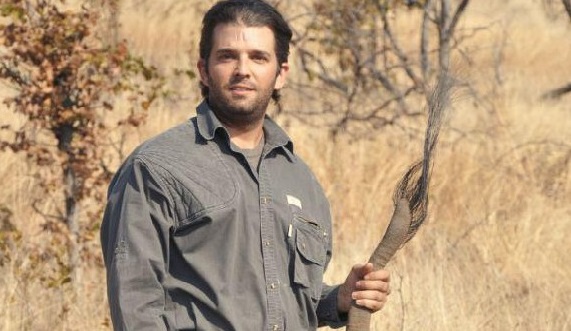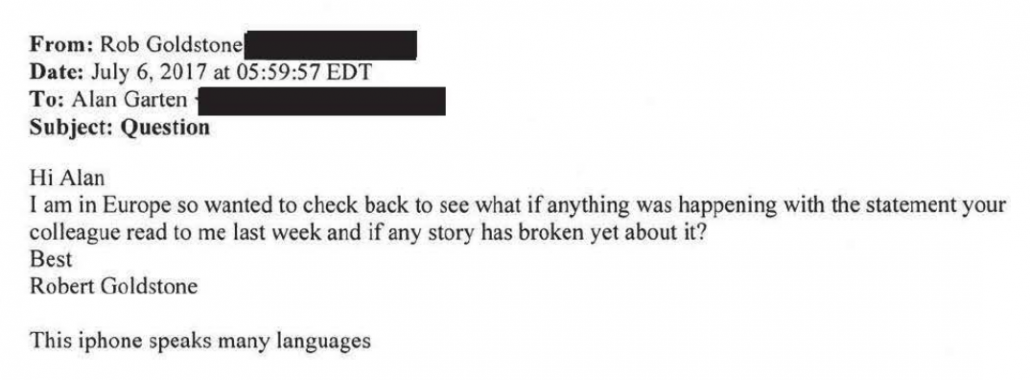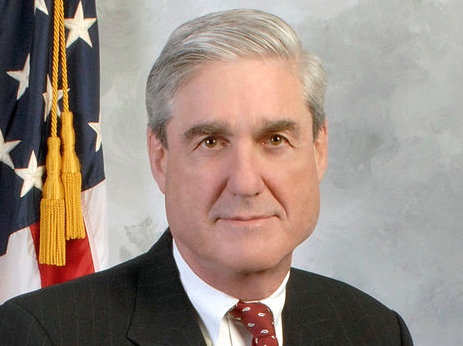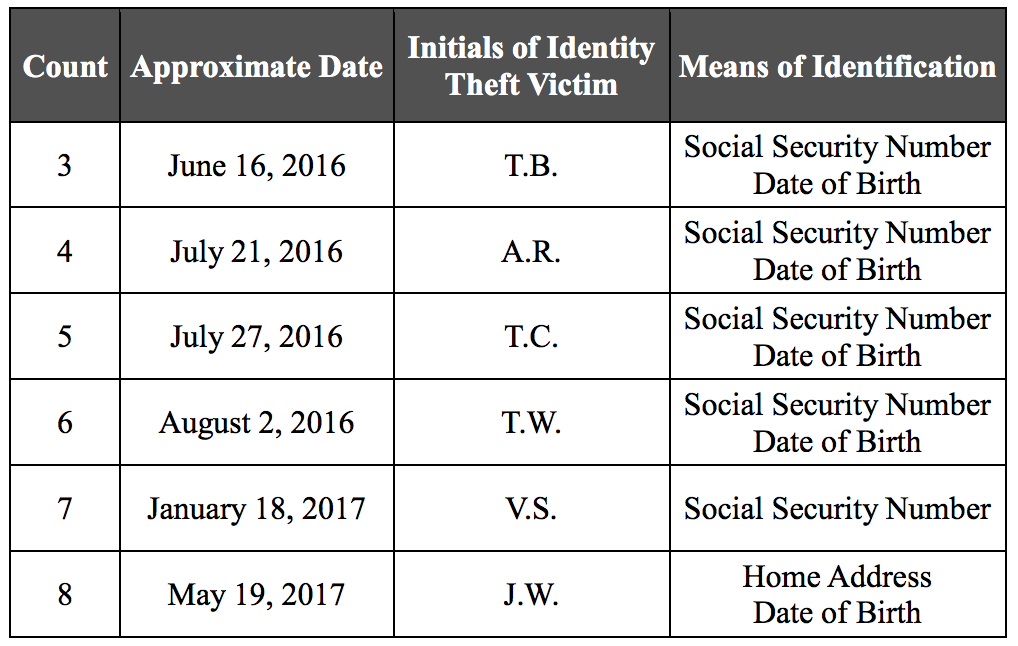Some Possibilities on the Emails Hope Hicks Wanted to Withhold
Remember this story about how Hope Hicks told Mark Corallo in a conference call on July 9, 2017 that they didn’t have to be fully forthcoming about the purpose of the meeting because the emails would never come out?
In Mr. Corallo’s account — which he provided contemporaneously to three colleagues who later gave it to The Times — he told both Mr. Trump and Ms. Hicks that the statement drafted aboard Air Force One would backfire because documents would eventually surface showing that the meeting had been set up for the Trump campaign to get political dirt about Mrs. Clinton from the Russians.
According to his account, Ms. Hicks responded that the emails “will never get out” because only a few people had access to them. Mr. Corallo, who worked as a Justice Department spokesman during the George W. Bush administration, told colleagues he was alarmed not only by what Ms. Hicks had said — either she was being naïve or was suggesting that the emails could be withheld from investigators — but also that she had said it in front of the president without a lawyer on the phone and that the conversation could not be protected by attorney-client privilege.
At the time, I suggested something didn’t make sense about the story, given the facts we knew at the time, because the NYT already had (what we assume to be) the set of emails that got released.
[T]he NYT admits that even as (or shortly after) that meeting transpired it already had the emails Don Jr released that day and was going to publish them itself.
I suggested at the time that there might be other emails — perhaps between Don Jr and Rob Goldstone, perhaps between other players — that provided more damning information.
But there’s another possibility: that more emails exist, between Don Jr and Rob Goldstone (indeed, we know Goldstone sent follow-up emails involving Vkontakte). Or that there are communications between other players. In which case the release of the current emails might serve to distract from a fuller set that Hicks did succeed in burying.
Given the materials released to SJC — and when they were released — we can be sure there were other emails, and at least some of them have come out.
A return email to Paul Manafort
I’ve already noted one example, or at least part of one example. The Don Jr production turned over by the Trump Organization withheld the version of the original invite letter that includes a response from Paul Manafort.
Of particular interest, however, is a detail revealed about the email that Don Jr released last summer. Effectively, the email thread setting up the meeting appears in two places in the exhibits introduced with Don Jr’s testimony. The thread appearing at PDF 26 to 29 is for all intents and purposes the set he released over two tweets last July 11. That bears Bates stamp DJTJR 485 to 487, which designates that it was the version that Don Jr himself turned over. There’s another version of that thread, though, bearing Bates stamp DJTFP 11895 to 11897, which appears at PDF 1 to 3 in Don Jr’s exhibits (and is used for all the other witnesses). The Bates stamp abbreviation DJTFP, Donald J Trump for President, indicates that that’s the version turned over by the campaign. The exhibit shows the same thread, only with this addition.
That is, after Don Jr informed Jared and Paul Manafort that the meeting would be at 4 instead of 3, Manafort responded, “See you then.”
That — and the fact that Don Jr chose to suppress it when publicly releasing his email — is not by itself damning.
Jared wasn’t copied on the Manafort response, so he couldn’t have turned over the Manafort response (and it wouldn’t have been in the copy leaked to the NYT, if he did the leaking, as suggested by Michael Wolff’s book). Nevertheless by the time Don Jr testified on September 7, SJC had both copies.
Manafort’s awareness of the meeting might be damning by itself, because he spoke with Don Jr and met with Trump on June 7, the day Trump announced the campaign would soon be making a “a major speech on probably Monday of next week, and we’re going to be discussing all of the things that have taken place with the Clintons.”
But it’s possible Manafort’s response wasn’t the last in the thread. Perhaps Don Jr wrote back and said something like, “with the dirt Emin promised we’ll really take out this bitch” or something similarly dignified.
The emails showing Agalarov involvement
As I mentioned in this thread, Goldstone did not fully cooperate with SJC. In the first round he left out a lot of stuff that was responsive to SJC’s request and he never provided phone records; in his later production, two voice mails from Emin appear to be truncated. But in February of 2018 (probably after at least one interview with Mueller’s team), his lawyer provided more documents not produced in the first go-around. Among other things, those materials included more details on Emin’s involvement in crafting a statement, and Kaveladze’s role running everything. Of particular interest, many of these materials would show direct communications between the Agalarov camp and Trump Organization lawyers as they crafted their statement.
The draft statement from July 6
Finally, when considering the possibility that parties withheld damning records, consider this email between Goldstone and Don Jr’s lawyer.
It shows that by the time Goldstone (and Emin and Kaveladze) had some phone calls with Alan Garten and Alan Futerfas at the end of June, the Trump folks already had a statement. When Goldstone gets off his cruise in Greece on July 6, he immediately contacts the Trump camp and asks if that statement has been released.
There’s no record of a response to Goldstone from the Trump camp for several days (though they were on the phone with Kaveladze), until when, on July 9, someone (Goldstone believes it’s the Trump camp) leaked his name. That’s when communications resumed, starting with a Trump request that Goldstone attest that the misleading Don Jr statement they subsequently released is 100% true.
Still, the communication on July 6 is damning enough, because it makes it clear that before Trump is known to have been involved, before Trump spoke to Putin, the Trump camp had what it presented as a finalized statement.
Now imagine if either Goldstone or someone else has a hard copy of that statement and it qualitatively deviates from the existing story?
One notable detail. As noted, Goldstone provided these materials after the NYT story at question here, and after Mark Corallo said he’d testify about Hope Hicks’ obstruction; it possibly took place after the Corallo testimony itself. Goldstone testified to SJC a second time on March 29, not long after Mueller subpoenaed the Trump organization — a subpoena that almost certainly would obtain new copies of the documents at least pointed to if not turned over by others.
All of which is to say that there are numerous emails that have been identified since Don Jr testified that appear not to have been turned over in his production, not to mention any Manafort communications he suppressed.
As I’m still working on showing, there was a tremendous degree of coordination going on in that period. And yet, perhaps in spite of that, some of the key documents didn’t get turned over.
Update: Here’s a version of the document requests to the Trump’s. Any of the emails between the Trump lawyers and Kaveladze or Goldstone would have been responsive. Here is what Jared got (remember, the committee complained that he hadn’t provided everything). And here is what Kaveladze and what Goldstone got. I can see Goldstone arguing the follow-up — and the discussions about earlier Agalarov/Trump meetings — didn’t fit the criteria laid out.





